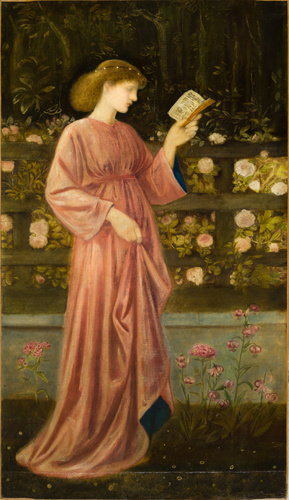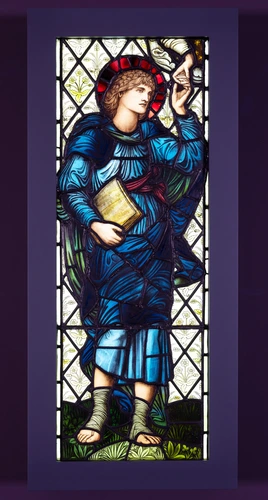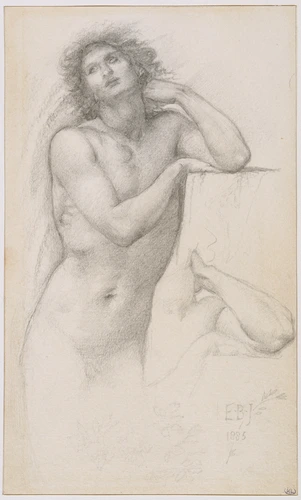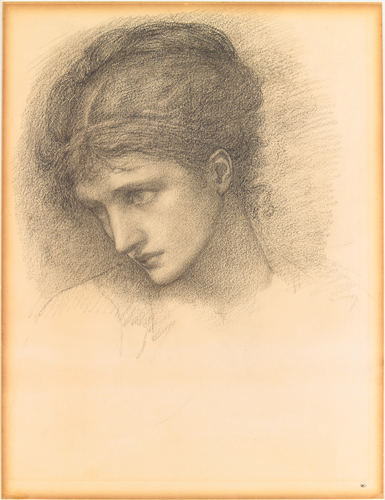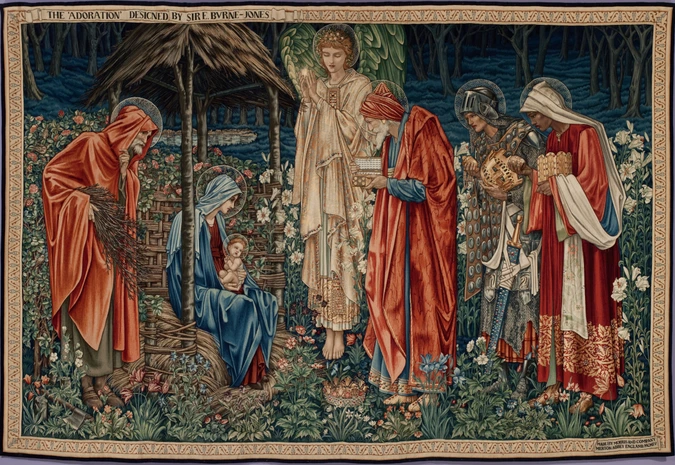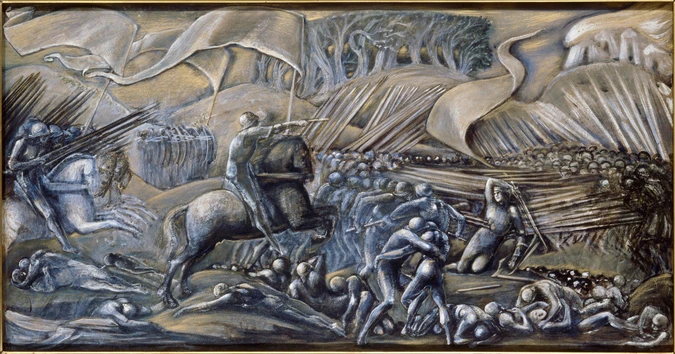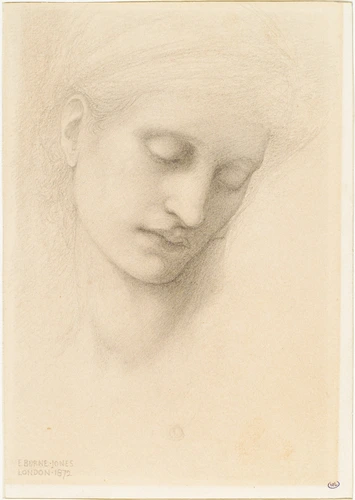La Roue de la Fortune
"My wheel of Fortune is a true-to-life image; it comes to fetch each of us in turn, then it crushes us," was Burne-Jones' heartfelt or disillusioned comment. The work is a perfect example of his taste for classical myths and medieval legends, which mingle uneasy sensuality and a feeling of disquiet, which make his symbolism particularly bitter. This Fortune is one of his most powerful compositions. The wheel spans the whole painting from top to bottom, turning in a relentless rise and fall, while the implacable, gigantic goddess forms a pendant for the powerless mortals: a slave, a king and a poet.
The canvas is entirely covered with the bodies and the wheel, the palette ranges from steel grey to brown, accentuating the suffocating mood and the sense of hopeless fatality. The female figure is draped in an antique toga falling in Botticelli-like folds drawn with remarkable skill; the nudes are inspired by Michelangelo's figures for the Sistine Chapel.
The painting was exhibited in London in 1883 and immediately acclaimed as a capital work in the Pre-Raphaelite movement.


